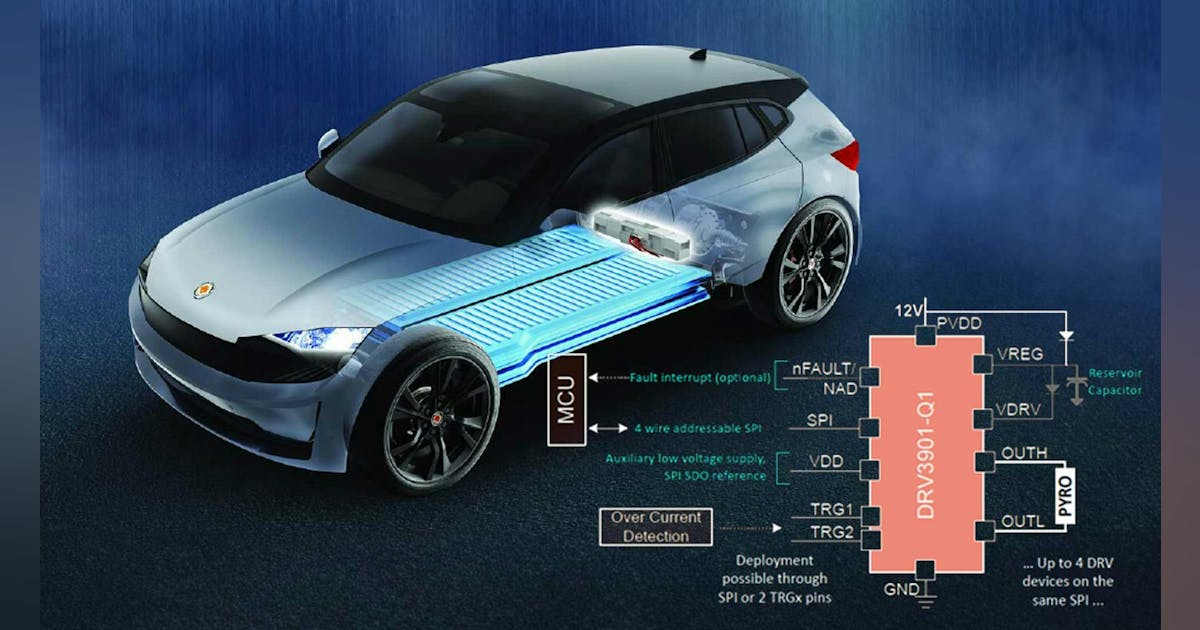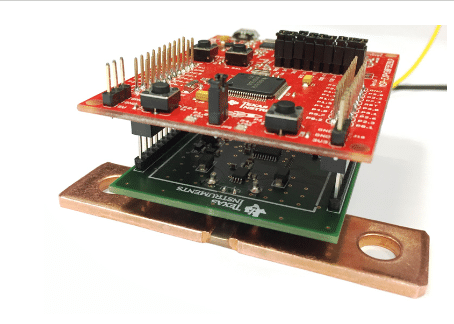This IC not only provides the needed squib drive when instructed to do so by an MCU, but also includes many other features and functions for reliability and safety. It can be directed by an addressable SPI bus (to support multiple ICs). However, this, of course, adds several layers of intermediate complexity between triggering event and action triggering.
For this reason, its deployment command can also be issued directly via hardware to enable the flexibility to trigger via MCU hardware pins, directly with an overcurrent sensor, or through other external hardware-based sensors and circuit monitors.
Monitoring the Driver’s Health
Furthermore, the built-in diagnostics monitor tracks the various aspects of the driver status, pyro-fuse health (via squib resistance), and backup power availability. A capacitor acts as a backup power source for the pyro-fuse system for situations where the main supply from the battery is no longer available.
In turn, this backup supply needs monitoring, so the reservoir capacitor is measured by periodically checking the discharge voltage of the capacitor. This enables the DRV3901-Q1 driver and the MCU to detect a failure of this backup power supply before its needed and subsequently alert the vehicle (hello, “check engine” light!).
The configurable deployment current/pulse widths of this device are 1.2 A for 2 ms, through 1.75 A/0.5 ms, up to 3.4 A/0.5 ms. Housed in a compact HVSSOP-28 (DGQ) leaded package, this functionally safety-compliant IC can function with up to 28-V operating voltage (40 V maximum) and is AEC-Q100 qualified for automotive applications (temperature grade 1: –40 to +125°C).
It’s supported by a 16-page datasheet and documentation is available to aid ISO26262 system design up to ASIL C level. There’s also a short but interesting technical article with representative waveforms and timing.2
For those who want to further explore the DRV3901-Q1, TI offers the DRV3901-Q1EVM evaluation module (Fig. 2). This module supports the use of two DRV3901-Q1 devices for flexibility in testing parallel or redundant systems.






